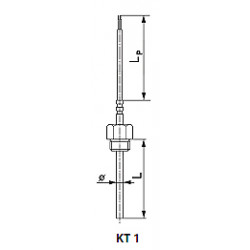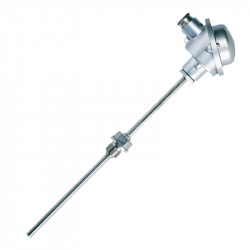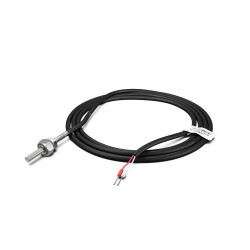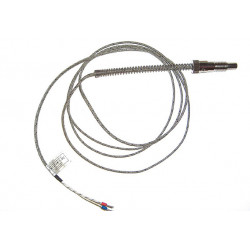Vous devez être connecté
Thermocouples
Catégories
- Capteurs de température sans contact pour objets en mouvement - C015
- Capteur de température thermoélectrique avec insert de mesure gainé remplaçable dans un tube de protection métallique TD 1
- Capteur de température thermoélectrique avec insert de mesure gainé remplaçable dans un tube métallique de protection TP 1
- Capteur de température thermoélectrique avec insert de mesure gainé remplaçable dans un tube de protection métallique TD 2
- Capteur de température thermoélectrique - mesure en trois points. type: tw
- Capteur de température à thermocouple avec extrémités libres. type: tp 3
- Capteur de température à thermocouple avec manchon. type: tp 4
- Capteur de température à enveloppe thermoélectrique avec prise. type: tp 6
- Capteur de température thermoélectrique ou à résistance. type: kt1
- Capteur de température thermoélectrique ou à résistance. type: kt2
- Thermocouple droit (J, K, N) - TC-07
- Thermocouple gainé (J, K, N) - TC-42
- Thermocouple avec borne filetée (J) - ETB
Nous proposons une large gamme de thermocouples pour les applications industrielles et d’automatisation
La mesure de la température est l’une des tâches les plus importantes en automatisation – en milieu industriel, les thermocouples et les détecteurs de température résistifs (RTD) sont les plus utilisés.
Thermocouples – applications
Les thermocouples, également appelés capteurs thermoelectriques de température, sont l’une des solutions les plus populaires pour la mesure de la température dans l’industrie. Leurs principales applications comprennent les laboratoires, le transport, les équipements de mesure et de contrôle, les systèmes d’acquisition de données, les dispositifs automatiques multicanaux, les scanners, les systèmes thermiques et les équipements militaires.
Avantages des thermocouples :
- coût faible ;
- construction simple, durable et fiable ;
- tensions de sortie prévisibles ;
- possibilité d’utilisation en environnements chimiquement agressifs ;
- large plage de mesure de température de -100°C à plus de 2500°C ;
- haute précision de mesure.
Quels sont les types de thermocouples ?
Plusieurs types d’alliages métalliques sont utilisés pour fabriquer des thermocouples, chacun destiné à des applications différentes.
Type E – alliages adaptés aux températures de -200°C à 871°C. Utilisés dans des atmosphères allant du vide à légèrement oxydantes et à très basses températures.
Type J – alliages adaptés aux températures plus basses (0°C à 600°C). Utilisés dans l’industrie chimique (production de plastique).
Type K – standard industriel pour des températures jusqu’à 1250°C.
Type T – alliages adaptés aux températures de -200°C à 350°C. Couramment utilisés dans l’industrie alimentaire.
Découvrez également nos capteurs de température et d’humidité disponibles dans notre large gamme !

























